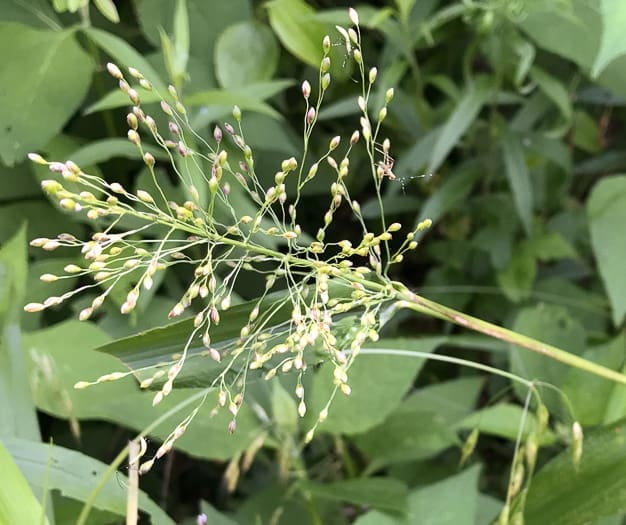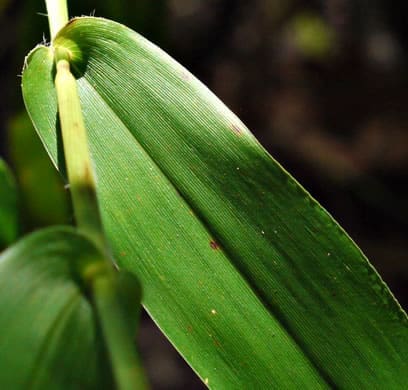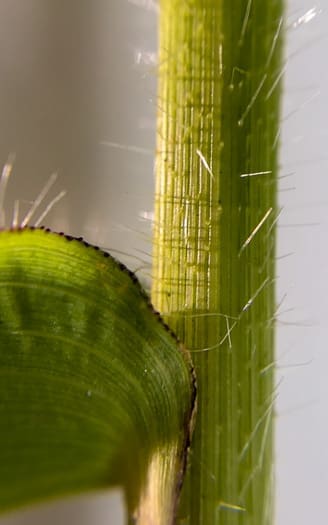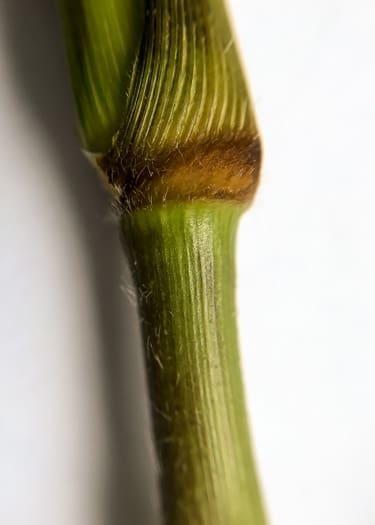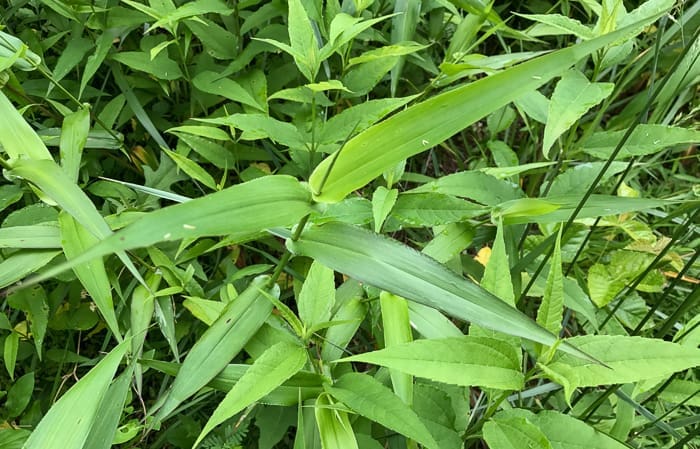Poaceae
deer-tongue witchgrass
Dichanthelium clandestinum
Synonyms
Panicum clandestinum
Other Common Names
deertongue, witchgrass
Plant Type
Grass/Grass-like
Life Cycle
Perennial
Typical Size
1 ft. tall
1 ft. wide
Tolerant of
Occasional Flooding
Inolerant of
Dry Soil
Propagation
By seed, By division
Plant Planting Notes
Provide 3′ spacing.
Plants/Diseases
No serious insect or disease issues.
Wildlife Benefits
Fruit/seeds for birds
Leaves
The simple, alternate leaves are lanceolate with entire margins. Leaf bases wrap around the stem as a sheath.
Flowers
The small flowers are arranged in 2.5-6″ panicles with spreading, whorled, lateral branches. In the fall, inflorescence remain within sheaths.
Fruit
Caryopsis
Bark
Terete stems.
Toxicity
No known toxicity.
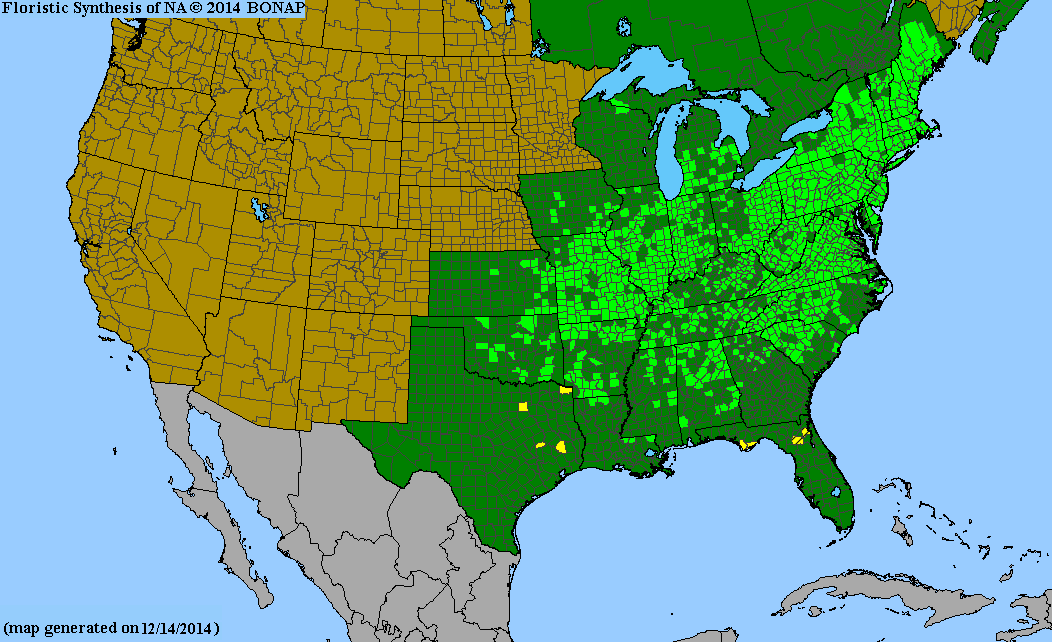
Light Exposure
Full Sun, Part Sun/Shade, Full Shade
Soil Moisture
Moist
Soil Drainage
Well-drained
Soil pH
Acidic (less than 6.0), Neutral (6.0-8.0)
Native in South Carolina?
Yes
Plant Native Habitat
Shaded to filtered woodlands, ditches and low areas, and often in moist sandy soil.
Global Conservation Status (NatureServe)
Secure (G5)
Federal Conservation Status (USFWS)
Not Listed
Distribution Notes
Common in the SC Mountains and Piedmont, and uncommon in the Coastal Plain

